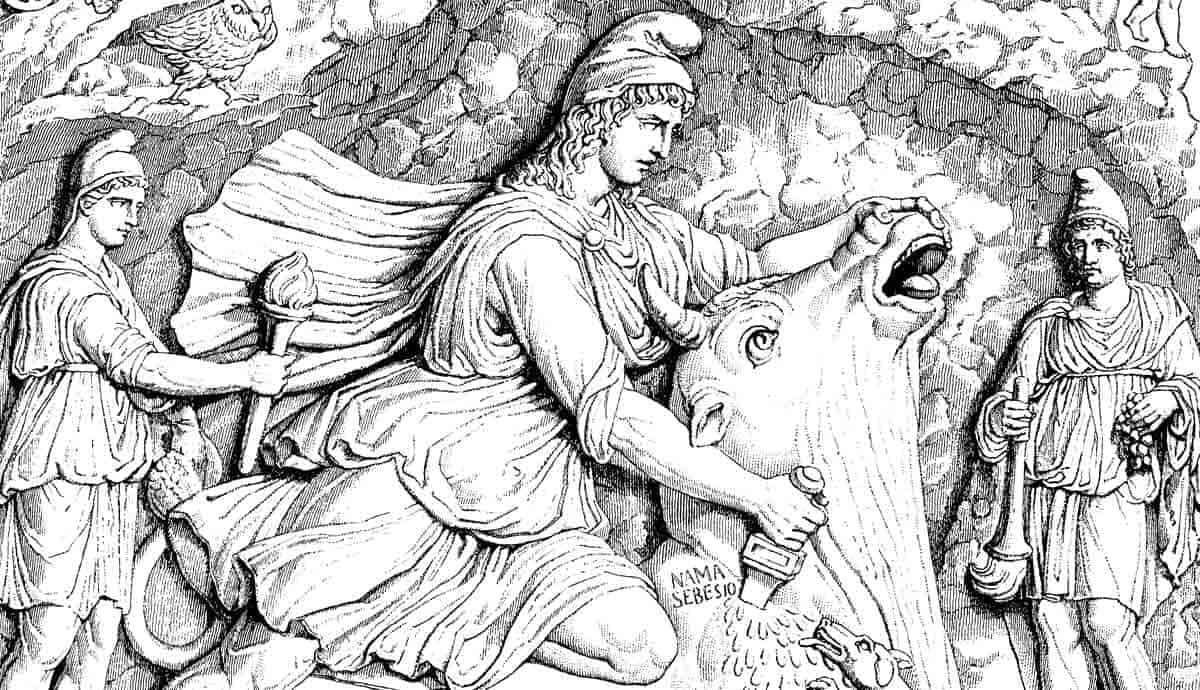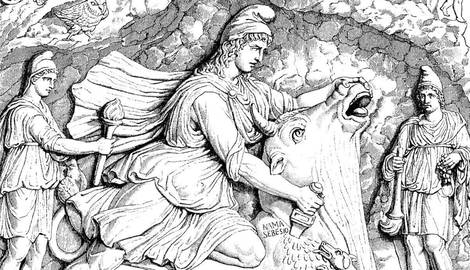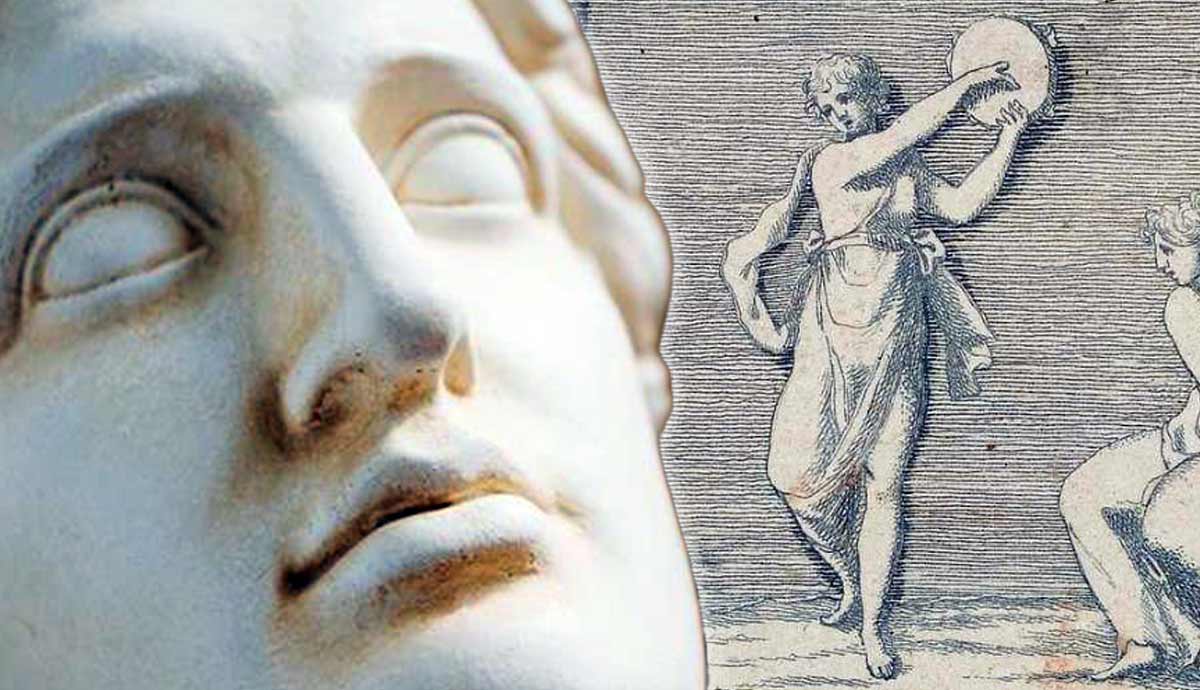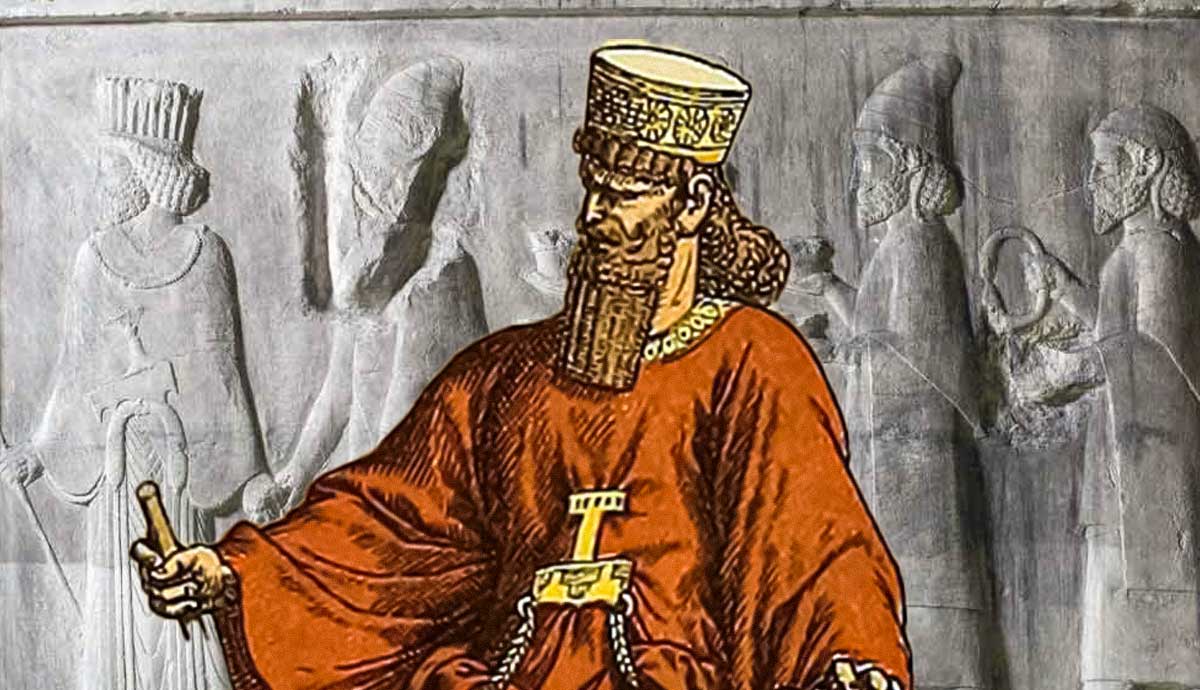
The establishment of Roman Mithraism in the West (1st to 4th century CE) mirrored the military and cultural challenge to Roman hegemony that emerged in the East from the Parthian Empire.
Successor to a Persian legacy, Parthia was the true patron of Mithraism’s deeply antiquated and authentic, pre-Roman tradition. Following the Zoroastrian tradition, Mithras remained a revered figure of the Parthians, a powerful God amongst their elites.
So, why would Rome co-opt a foreign deity from arguably its most significant enemy? The answer may reside in the common ancient practice of God-stealing.
What Was Roman God Stealing?

Like numerous ancient peoples before them, the Roman state engaged in God stealing. In peace and in war, Rome nurtured a secret, sensitive history in abducting foreign Gods. Part of this ancient mos maiorum (ancestral custom) went back to Rome’s earliest roots.
Notably distinct from other common forms of religious assimilation and syncretization, divine abduction was a highly targeted and ritualized act, orchestrated by the Roman state.
Involving literal and supernatural elements, Rome ensured that powerful foreign divinities were split off from their host nations and co-opted back to Rome or Italy. God abductions could also be an important element of Rome’s religious and cultural warfare, vindictively deployed to destroy significant enemies.
Part kidnap, part enticement, ritual abductions were sensitive events aimed at forcing “divine defections” in favor of Rome. Addressing heavenly imbalance, they were intended to bolster Rome’s religious fortunes, securing divine patronage from misaligned celestial forces.
Commonly undertaken during times of acute stress for the Roman state, religious abduction persistently reflected Rome’s most acute moments of military and cultural crisis.
We can clearly identify two types of abduction model: the ritual act of evocatio as practiced literally in the midst of war, and the peacetime conveyance of deities by official religious delegation back to Rome.
As Pliny the Elder relates of evocatio, the entire topic was rarely discussed on account of powerful religious and cultural sensitivities. It was also severely at odds with Rome’s vision of itself as a culturally superior conquering empire. Consequently, Roman religious abduction has been overlooked, its significance poorly acknowledged by Romans of the time and by subsequent historians.
God theft was Rome’s dirty little secret and most significantly, traces of it persisted far later than many have appreciated.
Stealing Gods in War: Evocatio

Noun Evocation: the action of invoking a spirit or deity.
Deployed when Romans feared they were battling more than terrestrial forces, evocatio was a significant though rare Roman practice. A ritualistic dark art, it forced the transference of foreign deities away from their native city and people.
Delivered at the most acute culmination of ancient warfare, typically the destruction of an enemy city, evocatio was a ritual act, allowing the Romans to hedge risk during religiously critical moments. The practice sought to control heavenly retribution, protecting the Roman army and state from potentially vindictive enemy Gods.
Prior to an assault, a Roman priest or commander would enact an incantation, enticing the enemy deity to abandon their city. This included an appeasement element; the displaced divinity was often promised a prestigious temple and rights of worship within either Rome or Italy.
City boundaries carried profound religious significance in the ancient world and for Romans especially (descendants of fabled Troy), abandonment by the Gods was near cataclysmic:
“All the Gods by whom this empire was supported
have departed, leaving behind their temples and their altars: …”
[Virgil, Aeneid 2,351]

Tutelar deities (the patron God of a people or city) were a cornerstone of state survival. For Romans and other ancient peoples, this was an essential aspect of religious state security.
Evocation sought to mollify the anger of those enemy deities of uncertain power and spite.
Yet in a wider cultural sense, this was also an act of ritualized conquest, co-opting the protectors of Rome’s enemies, in an act of religious and cultural domination.
Deployed against Rome’s ancient enemy Veii in c. 396 BCE, the Etruscan Juno Regina was lured back to Rome:
“‘Queen Juno, who now dwellest in Veii, I beseech, that thou wouldst follow us, after our victory, to the City which is ours and which will soon be thine, where a temple worthy of thy majesty will receive thee.’” [Livy, History, 5.21]
An honor guard of youthful nobles escorted the Goddess’s statue back to a prestigious temple on the Aventine Hill.

Unknown deities were also seemingly evoked at the siege of Etruscan Falerii in 241 BCE.
At the culmination of the Third Punic War, Rome would abduct at least one deity from Carthage in 146 BCE. A supposed incantation by the commander Scipio Aemilianus is intriguing:
“… to any God, to any Goddess, under whose protection are the people and state of Carthage, and chiefly to thee who are charged with the protection of the city and people, I make prayer and do reverence and ask grace of you all, that ye abandon the people and state of Carthage, forsake their places, temples, shrines, and city, and depart there from; …” [Macrobius, Saturnalia, 2.7.]
In other words, break with Carthage.
“… come to Rome, to me and to mine; and that our places, temples, shrines, and city may be more acceptable and pleasing to you; …” [Macrobius, Sat, 2.8.]
And be rewarded and honored back in Rome.

Finally, Macrobius identifies Scipio and the Roman army as the direct agents of religious transference back to Rome. This “contract” with the citizen military is most important for any Mithraic application:
“… take me and the Roman people and my soldiers under your charge; …” [Macrobius, Sat, 2.8.]
A far later source from the 5th Century CE, Macrobius has been heavily discounted as an obscure secondary witness, albeit quoting from earlier lost records. Yet, whether verbatim or imagined, the elements of such an incantation are highly plausible. It credibly highlights a distinct cultural phenomenon, aligning well with other contemporary and established sources, such as Livy, Pliny the Elder, and Plutarch.
Archaeology further underlines an instance of evocation that persisted even into the late Republic. A fragmentary inscription (AE 1977, 816 = CIL IÇ 2954) taken from the Cilician city of Isaura Vetus in Asia Minor (southern Turkey) dates to 75 BCE and, in short form, emulates aspects of the ritualistic terminology cited by Macrobius.
The Cilician link is tantalizing, as the only direct literary testimony we have (Plutarch) notes that it was Cilician Pirates that propagated Mithraism across the Mediterranean.
However, site evidence suggests a distinct limitation of the evocation practiced at Isaura Vetus whereby the unknown tutelary deity was appeased with a temple in the local province, and did not receive full conveyance to Rome.
Evocatio Into Imperial Times

Evocation may well have extended into the Early Principate and therefore constituted a viable mechanism for Mithraic transference to the West.
Pliny the Elder cites Verrius Flaccus, noting that pontiffs were still, in Augustan times, proficient in the practice:
“… [at] a siege, it was the usage, the first thing of all, for the Roman priests to summon forth the tutelary divinity of that particular town, and to promise him the same rites, or even a more extended worship, at Rome; and at the present day even, this ritual still forms part of the discipline of our pontiffs. Hence it is, no doubt, that the name of the tutelary deity of Rome has been so strictly kept concealed, lest any of our enemies should act in a similar manner.”
[Pliny, Natural History, 28.4.18]
Pliny confirms that Rome was still capable of performing evocation in the early 1st century CE, a period pertinent for the early transfer of Mithraism to the Roman West.
Evocatio was certainly an archaic ritual, clearly diminishing by the Late Republic, yet whether the practice was redundant by the 1st century CE, is far less certain.

In the shadow realm of religious “black ops,” Pliny also highlights that the Romans were deeply paranoid about their own vulnerabilities. Plutarch echoes the sentiment:
“… as certain Roman writers have recorded, there are certain evocations and enchantments affecting the gods, by which the Romans also believed that certain gods had been called forth from their enemies, and had come to dwell among themselves, and they were afraid of having this same thing done to them by others?” (Plutarch, Moralia, Roman Questions, 61)
Plutarch goes on to note that Valerius Soranus (possibly a Tribune in the time of Sulla) was put to death for uttering the name(s) of Rome’s tutelary protector(s). God capture and protection was a serious and clandestine business. Careless talk costs lives.
Of paramount relevance to the Mithraic context, these various references within the late Republic and Early Principate render “divine abduction” a viable (though previously overlooked) model for the “transference” of Roman Mithras to the West.
Stealing Gods in Peacetime

The Roman state also co-opted foreign Gods in times of peace. Triggered by periods of acute stress, abductions were aimed at addressing specific problems.
Ceres, an agricultural deity was transposed to Rome by the dictator A. Postumius Albinus. This followed command of the Sibylline Books, most notably in response to a period of famine in around 496 BCE. Associated with the Greek goddess Demeter, she was afforded a temple on the Aventine Hill.
In 291 BCE, the healing god Asclepius was summoned to Rome from Epidaurus, following a plague in 293 BCE, and installed outside the city, on an island in the Tiber. A strange “dream-like” story exists in Livy of the Roman embassy literally escorting a snake (the symbolic embodiment of Asclepius) by ship, back to Rome.
Cybele (Roman Magna Mater) was similarly conveyed from Phrygia in Asia Minor and established on the Palatine Hill in Rome in 204 BCE. Guided by the Sibylline Books, the deity was welcomed to Rome by prominent Roman matrons. Like Mithras, Cybele had an ancient and distinctly eastern pedigree, established long before her Romanization. Driven by the Second Punic War, the Romans needed a divine boost in their deadly struggle with Carthage.
Rome clearly had a tradition of co-opting foreign deities during periods of crisis. Indeed, it is hard not to see the Romans as actually “shopping to order” for certain deities and their attributes. Some anthropologists have labelled Roman God-stealing as nothing less than a “crisis ritual,” undertaken in response to acute periods of cultural uncertainty.
But if later Mithraic transference in the 1st century CE was part of this model, what was the actual crisis Rome faced?
Parthia: Hot Wars, Cold Wars, Culture Wars

“… thus when Crassus fell,Who held apart the chiefs, in piteous death,And stained Assyria’s plains with Latin blood,Defeat in Parthia loosed the war in Rome.”
[Lucan, Pharsalia, 1,103ff]
Parthia’s earliest shock victory over Rome foreshadowed the Republic’s fall.
Though not the cause of the state’s demise, the total defeat of Crassus by Parthian arms at Carrhae in 53 BCE set in motion a political “unravelling” that would see the Republic falter. Decades of deadly civil war would follow; a bloody doomsday for the proud Republic that had conquered for half a millennium!
Not only the nemesis of Crassus, Parthia defied the military ambitions of Caesar and Antony. Though Octavian would present the later retrieval of Crassus’s lost eagles as a victory, this was thin propaganda for a Roman audience.
Rome certainly rallied to experience both military and diplomatic victories in the East again, but the martial confidence of the Late Republic was a true zenith, at least for generations to follow. Parthia would endure as a long-term rival to Rome’s hegemony in the East.
Potential clues around Rome’s adoption of Mithras emerge within the context of this new relationship with Parthia. Typified by the sponsorship of opposing puppet-kings, uneasy treaties, spheres of influence, tensions, and breakdowns into conflict, the Julio-Claudian rulers each sought strategies to stabilize the Eastern border while projecting—to varying degrees of reality—notions of Roman power, control, and cultural legitimacy.
Though much of the conflict of the 1st century CE played out via proxy wars (largely over Armenia), Rome’s hot conflicts with Parthia were punctuated with distinct periods of a deeper “cold war.” Elements of diplomatic and cultural warfare played-out as the two power-blocks maneuvered for advantage throughout the 1st century CE.

Here, both Rome and Parthia engaged in highly symbolic acts of cultural and political conflict that almost certainly included dimensions of religious warfare.
The ritual submission of the Armenian king Tiridates I in 66 CE before a statue of Nero, mounted on a curial chair, is a distinct example, demonstrating the importance of symbolism within the psychological realm of a wider cultural war.
It is against this backdrop that the ritual abduction of Mithras into the Roman orbit, may conceivably have played out. Whether constructed as a voluntary divine defection or an induced state kidnapping, the usurpation of a principal Parthian God to the Roman West must have constituted a propagandic coup of the highest order.
Parthia was certainly not above such dirty tricks. Bizarrely, the posthumous usurpation of the last Julio-Claudian emperor, Nero, was a shocking example. Parthia harbored at least two pseudo-Neros who emerged in the decades following Nero’s suicide in 68 CE.
“You steal our God; we steal your Emperor,” or the other way around. No matter how bogus, the hints of a “tit for tat,” asymmetrical war are clearly there if we know where to look. Perpetually opaque, such instances also convey the distinct elements of ritual dominance and denigration that are characteristics of so many “dirty wars.”

Overt dominance is certainly something that can be found within “Roman” Mithraic iconography. The ritual bull slaughter (tauroctony) that appears exclusively within Roman Mithraism might well carry an allegorical and vindictive message for the jilted Parthians.
Bulls conveyed both sacred and royal connotations within the Achaemenid and Parthian tradition. Their ritual slaughter by a co-opted Romanized Mithras might conceivably signify a domineering message of Roman ritual supremacy. Aspects of Mithraic practice clearly simulated ritual acts of violence and domination. Could these acts have been constructed to convey Roman symbolic dominance? Was Roman Mithraism an “I’m the daddy” cult?
As a deity, Mithras made for a high-value cultural target. The powerful sun god, associated with divine order and contracts, was believed to have regulated oaths of military service, including those between eastern kings and their warrior elites.
Though the overview is speculative, what is certain, is that Rome and Parthia were clearly messing* with each other within the cultural and symbolic spheres. Was Mithras a casualty?
*Kids today use stronger words.
Does a God-Stealing Model Fit?

With the use of evocation seemingly running into the Late Republic, and with ritual capability being retained by Pontiffs of the 1st century CE, we have a timeframe that is viable for the establishment of Roman Mithraea (underground temples) in the West.
Traditional supposition is that Roman Mithraism must have transfused into the West a generation or so before the appearance of well-built Mithraea in Rome, Italy, and the central Roman Empire. This would fit with the earliest examples that we see in archaeology from the later quarter of the 1st century CE.
Perplexing to historians and archaeologists, the diffusion of Mithraic temples does not show any gradual or sequential spread from Rome’s Eastern provinces back to the West, but rather a comparatively rapid “jump” to the center of the empire. Enter here the model that Mithras may have been ritually conveyed back to Rome, as we know other co-opted deities were.
With a high relative concentration of Mithraea specifically around Ostia and Rome, we might also consider that Ostia (and the Tiber-Rome axis) was the predictable point of entry for any “conveyed” divinity to make landfall in Italy.

Additionally, a growing discourse has also furthered the theory, that Roman Mithraism—so seemingly disjointed and inauthentic from its Persianized antiquity—may have been a Roman pseudo-religion: perhaps a “costume cult,” loosely appropriated from the East.
A God stealing model also accommodates this scenario, as Romans may have “stolen” mere approximations of their enemies’ gods. It does not follow that they were always accurate (or even cared to be) in their understanding of the Gods they co-opted. Macrobius certainly hints that Scipio Aemilianus invoked unknown deities from Carthage, that he could not fully hope to fathom prior to the city’s fall.
If the “capture” of Mithras was part of Roman cultural warfare, the symbolic dominance and humiliation (rather than authenticity) may have been Rome’s primary focus.

Subsequent distribution of Roman Mithraea (1st to 3rd century CE) highlight the cult’s great success in military frontier provinces, such as Northern and Western Europe (Hadrian’s Wall, the Rhine and Danube frontiers), as well as North Africa. This attests to the tacit, though powerful appeal of the cult specifically within the army.
Though modern scholarship has broadened its interpretation of Mithraic/military participation to include ancillary groups like veterans, administers, traders and artisans (freedmen), Mithraism’s correlation with the wider army (administrative, logistical and commercial) remains fundamental.
Mithraism tracked the Roman army through cities, forts, frontiers, roads, and rivers, mapping onto logistical networks by which the Roman army built and operated.
Mithraism also drew imperial patronage, and although secretive, this is clear testimony to a cult that was hiding in plain sight.
Paranoia and violent suppression were known responses to several other foreign cults (and groups) that triggered Roman distaste and anxiety. So, in the final analysis we must ask why Mithraism was tolerated when other prominent foreign cults were not?
At face value, Mithraism exhibited several “triggers” that typically invoked Roman persecution. Not only foreign, but from an “enemy” culture, Mithraism was both secretive and clandestinely linked to the army. Unless actively welcomed, it is hard to explain why the Romans did not see the cult as a real and present danger. The cult’s toleration was especially odd during an acute period of prolonged military and cultural tension with Parthia.
Stealing Mithras: In Conclusion

Even amongst the diverse foreign religions that were transfused, syncretized, and tolerated within Rome’s pantheon, something about Mithraism is still unique.
Early Parthian victories severely shook Roman military confidence—the bedrock of Roman cultural identity. Critically, this coincided with the seemingly linked demise of the Roman Republic.
To accommodate cultural trauma, might Rome have utilized a long-established crisis ritual, and stolen Mithras, the Parthian sun god?
A known Roman crisis ritual that endured into the Late Republic and apparently the Early Principate, it is a scenario that accounts for Mithraism’s unique acceptance by Rome and its military.
It is a model that explains Mithraism’s rapid and archaeologically distinct progression to the West. Involving elements of the symbolic and literal, God stealing offers a credible model that accommodates questions around the potentially “pseudo vs authentic” aspects of Roman Mithraic identity.
It is a proposition certainly deserving of further evaluation within Roman Mithraic study.









